We really enjoyed our 19 day tour of Bhutan, Nepal and Tibet tour arranged by Asian Odyessey. Alina helped customize our itinerary, mostly adding a few free rest days, and was very helpful in communication throughout. The tour guides, hotels and transportation were all excellent. I am happy to recommend them and indeed am looking at another tour.
- Highlights
- Itinerary
- Price
- Trip Notes
- Accommodation
- Photos
- Reviews
Attention history and culture enthusiasts! Nepal, as the cultural powerhouse of the Himalayas, is a treasure trove of heritage. The Kathmandu Valley alone is home to 7 UNESCO World Heritage sites. You will all be in love with strolling through the medieval city squares and centuries-old stupas and monasteries.
Our meticulously crafted 5-Day Nepal Tour Package offers an intimate exploration of the Kathmandu Valley's UNESCO World Heritage sites, complemented by the natural splendor of the Himalayan sunrise. Experience firsthand the architectural grandeur and spiritual essence of the three Durbar Squares (Kathmandu, Patan, and Bhaktapur), the serene Swayambhunath and Boudhanath Stupas, and the sacred Pashupatinath Temple and Changu Narayan Temple.
A visit to Nepal is incomplete without witnessing the majestic snow-capped mountains. One of the highlights of our journey is the opportunity to enjoy the awe-inspiring sunrise over the Himalayas from the picturesque hilltop of Nagarkot. Located just 32km from Kathmandu, Nagarkot is an easy and comfortable place to spend a night and enjoy the Himalayan views from the comfort of your hotel balcony. It offers one of the broadest possible views of the Himalayas, with eight ranges visible.
Book your 5-Day Nepal Tour Package today and experience the best of Kathmandu Heritage & Nagarkot Sunrise in Comfort.

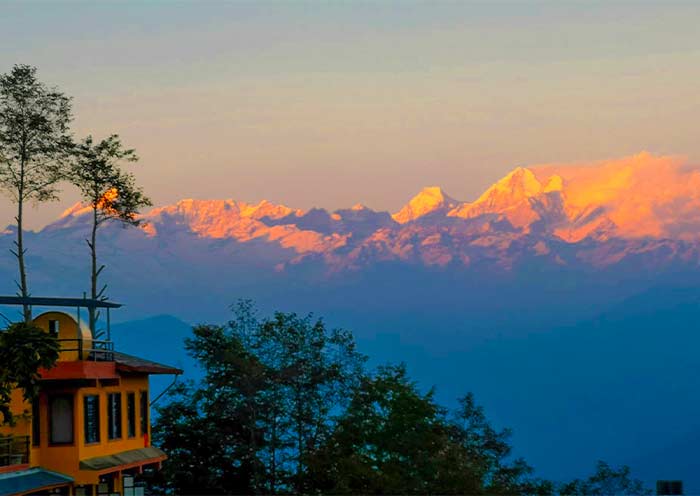



Itinerary at a Glance
Kathmandu (4 Days)
Kathmandu Durbar Square, Swayambhunath Stupa, Pashupatinath Temple, Boudhanath Stupa, Patan Durbar Square, Bhaktapur Durbar Square, Changu Narayan Temple
Nagarkot (1 Day)
Himalayan View Tower
Itinerary Day by Day
Namaste! Welcome to Kathmandu, the capital of Nepal! Upon your arrival at the airport in Nepal, the tour guide and driver will meet you at the exit and then escort you to the hotel in downtown Kathmandu. You can have a good rest in your hotel and get ready to explore Kathmandu Valley with your guide the next day.
Kathmandu is the largest city in Nepal, located in the Kathmandu Valley, which is surrounded by the majestic Himalayan mountain range. The city boasts a rich cultural and historical heritage, with numerous ancient temples, palaces, and monuments. Its architecture beautifully blends traditional Newari style with modern designs. Kathmandu is renowned for its vibrant street life and bustling markets, such as the Asan Bazaar and the Thamel district (street), offering a wide range of goods and services. The city's rich festival culture, stunning architecture, and friendly people make it a popular destination for travelers from around the world.
Arrival Ideas: Kathmandu's Tribhuvan International Airport (KTM) serves as the main gateway to the city, accommodating both domestic and international flights. You can fly directly to Kathmandu from major cities such as Hong Kong (5.5 hours), Chengdu (2.5 to 3.5 hours), Beijing (3.5 to 4.5 hours), Shanghai (4 to 5 hours), and Guangzhou (5 hours 15 minutes) in China. Other cities such as Delhi, Mumbai, Kolkata, and Bangalore in India, as well as Bangkok (Thailand), Singapore, Kuala Lumpur (Malaysia), Dubai (United Arab Emirates), Tokyo (Japan), Seoul (South Korea), London (UK), Paris (France), Frankfurt (Germany), Istanbul, New York, Los Angeles, and Toronto also offer flights to Kathmandu. The availability of direct flights to Kathmandu can also vary depending on the season and airline. So, checking with flight booking websites or our travel consultants for the latest information and options is always a good idea.

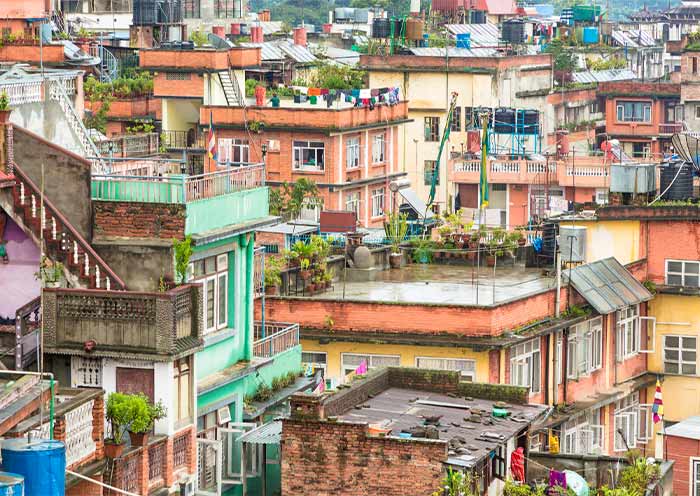
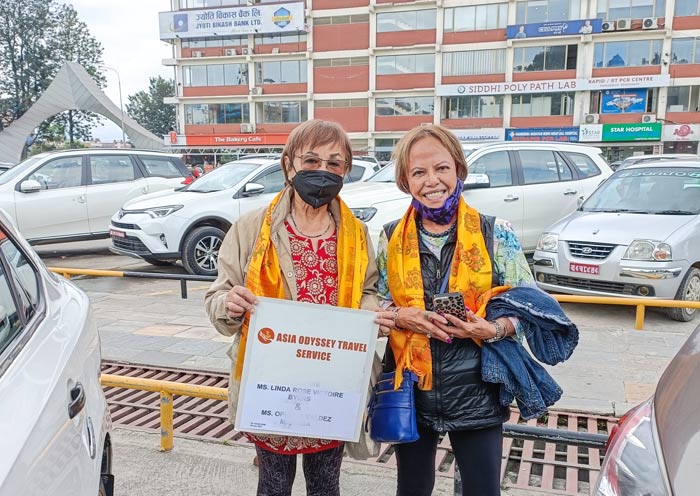
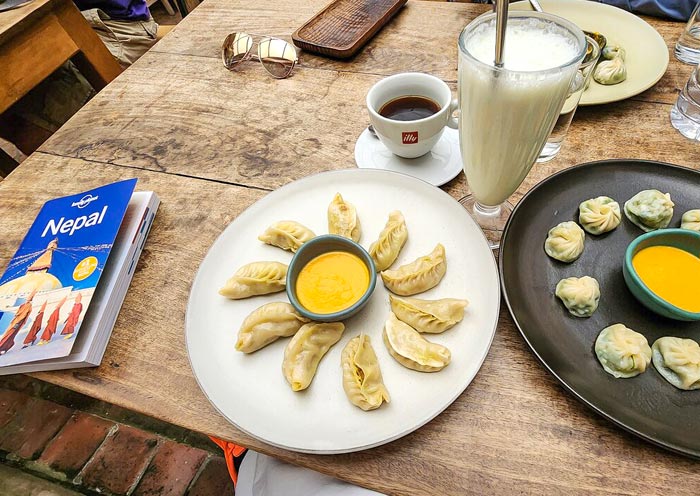
Today, you will explore 3 World Heritage Sites in Kathmandu and Patan. Begin by visiting Kathmandu Durbar Square (World Heritage), one of three royal palace squares in the Kathmandu Valley. You won't miss the Hanuman Dhoka, an iconic red palace adorned with intricate wooden carvings, which served as the residence of Malla Kings for centuries. Most of our guests arm to visit Kumari Ghar (House of the Living Goddess) and Taleju Temple (closely linked to the tradition of the Kumari). Through the Kumari Chowk, you may have the opportunity to catch a glimpse of the Kumari (a young girl worshiped as the living goddess Durga), who is revered by both Hindus and Buddhists in Nepal. The Kumari is selected from a Buddhist family through traditional tests and is believed to be the incarnation of the Goddess Taleju (Durga) until she reaches menstruation age. Dashain Festival (October; a 15-day festival) and Tihar Festival (November; Festival of Lights) offer the best chances of seeing the Kumari in public processions. The Bhairav Statue is also one of the best spots to experience Hindu culture, where you can witness local people worshipping the fearsome god Bhairav, the protector of the city.
Then, move on to Swayambhunath Temple (Stupa), also known as the Monkey Temple due to the swarms of monkeys that inhabit the area. Located on a hilltop on the western edge of Kathmandu, Swayambhunath Stupa (World Heritage) is visible from a distance. You can climb the steep stairs to reach the top of the hill, where you can enjoy panoramic views of Kathmandu Valley and even the Himalayas on clear days. As a must-visit destination in Kathmandu, the stupa is believed to have been built over 2,500 years ago, making it one of the oldest Buddhist sites in the world. The base of the stupa is surrounded by colorful prayer flags fluttering in the wind, carrying prayers and blessings to the heavens. It is a sacred pilgrimage site for both Hindus and Buddhists, signifying the coexistence of diverse beliefs in Nepal while showcasing Newari artistic heritage. Take your time to indulge in the temple's serene and spiritual ambiance, basking in its captivating architecture and embracing its natural beauty.
After that, head to visit Patan Durbar Square (World Heritage), which is 5km away, about a 0.5-hour drive. Located in Patan (Lalitpur), this square is renowned for its ancient architectural masterpieces, including dozens of Buddhist and Hindu temples, pagodas, stone, and wood carvings. Like Kathmandu Durbar Square and Bhaktapur Durbar Square, Patan Durbar Square served as the Royal Palace of the Malla Kings before Prithivi Narayan Shah conquered the Three Malla Kingdoms of Kathmandu, Patan, and Bhaktapur in 1769 and consolidated them to found the modern state of Nepal. He also established the capital of Nepal in Kathmandu. Patan is believed to have been established around 2,300 years ago and is the oldest of the three cities that make up the Kathmandu valley. It is a dazzling display of Newari architecture such as Krishna Mandir (21 golden spires and exquisite stonework), Golden Gate (ornate golden doorway), Sundari Chowk (enchanting courtyard).
Optional Morning Activity:
Mountain Scenic Flight: Take a scenic mountain flight at 6:30 AM from Tribhuvan International Airport to see the fantastic Himalayan peaks (Mount Everest is 20 miles from your window), lakes and glaciers. The flight lasting around one hour. After your flight, we would take you back to the hotel for breakfast.
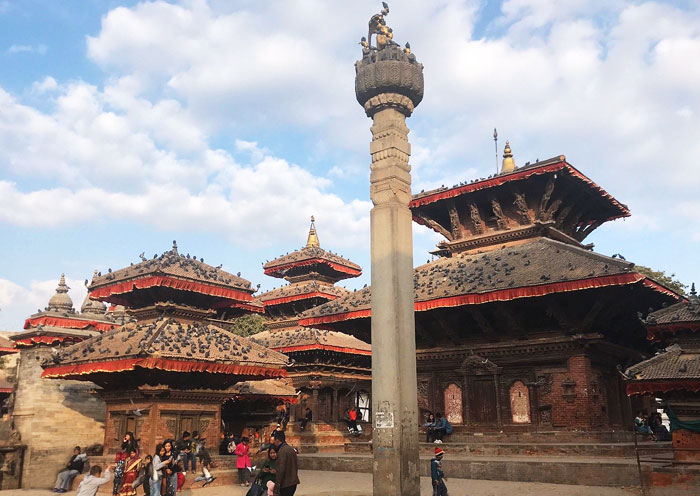



In the morning, you will visit the Pashupatinath Temple (World Heritage) - a stunning pagoda-style Hindu temple dedicated to Lord Shiva. As the oldest Hindu temple in Nepal, dating back to around 400 B.C., the main temple complex located at the Bagmati River is only open to Hindus. However, non-Hindus can observe the temple from the terraces on the east side of the river. Pashupatinath is often regarded as the Nepal equivalent of Varanasi in India. Originating in the Himalayan Mountains, the Bagmati River is believed to possess purifying qualities for the soul and holds immense sacred significance for both Hindus and Buddhists. Along the banks, there are platforms dedicated to cremation rites. For generations, families have brought the bodies of their loved ones who have passed away to the river, washing their feet and sprinkling drops of water on their faces. It is believed that the river washes away a person's sins and facilitates their journey to heaven. The bodies are then cremated along the riverbanks, and the ashes are scattered into the water. This is the most profound scene at Pashupatinath, evoking endless contemplation on life and death. From across the river, you will notice numerous hermit caves to the north of the cremation platforms. For centuries, hermits and ascetics have been meditating in these caves, and this practice continues to this day.
Next, you will head to Bodhnath which is a focal point for Tibetan Buddhism in Nepal and home to Boudhanath Stupa (one of the largest Buddhist stupas in the world). You can join the Tibetan pilgrims, and walk around the Boudhanath Stupa (World Heritage) clockwise, turning the prayer wheels under the protective gaze of Buddha's eyes. This is a way to show respect for the Buddha and to accumulate merit. The Boudhanath Stupa is 36 meters tall and 108 meters in diameter, designed as a mandala to represent the Buddhist cosmos. The structure is dominated by a massive dome, at the top of which sits a square tower adorned with the omnipresent eyes of Buddha, gazing serenely in the four cardinal directions. These eyes symbolize the omniscience of Buddha, offering protection and wisdom to all who seek refuge. Surrounding the stupa, prayer flags flutter in the wind, carrying mantras and prayers for peace, compassion, strength, and wisdom far and wide. In the evening, thousands of butter lamps illuminate the plaza surrounding the stupa. Equally fascinating are the surrounding streets, lined with Tibetan monasteries and shops selling religious art, Tibetan handicrafts, and traditional Nepali items.
After lunch, you will embark on a picturesque journey to Nagarkot (30km, 1.5 hrs), winding your way through quaint rivers, charming towns, and verdant farmlands. As Nagarkot draws near, the drive ascends, navigating through sharp curves and enveloped by lush, verdant forests.
For those with a penchant for capturing the beauty of sunsets, the enchanting town of Nagarkot is a dream destination. Nagarkot has a reputation as the top spot for enjoying Himalayan views from the comfort of your hotel balcony. Sitting at an elevation of around 2,175 meters (7,136 feet), the village is packed with hotels lining a ridge, affording one of the broadest possible views of the Himalayas with eight ranges visible: Dhaulagiri(8167m), Mt Everest (8848m), Kanchenjunga (8586m) Ganesh Himal (7406m), Langtang Lirung (7227m), Shisha Pangma (8012m), Dorje Lakpa (6966m) and Gauri Shankar (7134m). Tips: The best viewing seasons are October to December and March to April when clear skies are likely.
Upon reaching Nagarkot, proceed towards the lookout tower which is about 65 steps from the parking from where you can witness some majestic panorama of the world's tallest mountains. Observe the setting sun as it slowly behind the mountains, painting all the Himalayas in golden brown. Nagarkot itself is abundant with deep forests, small meadows, and fresh wind blowing straight from the far Himalayas. After enjoying the view, check into your comfortable hotel in Nagarkot and get a good rest to prepare for witnessing the first light of day illuminating the peaks tomorrow.




Begin your day before dawn to experience the magical sunrise in Nagarkot. The sky gradually shifts from a serene blue-gray to a canvas of pink and orange, signaling the sun's rise over the Himalayan giants. Everest, Annapurna, and Langtang emerge as majestic silhouettes against the glowing horizon, their snow-capped peaks illuminated by the first light of day. As the day fully breaks, the vast expanse of the Himalayas stretches out in all its glory, a panoramic view that few places on earth can rival.
After witnessing the sunrise, enjoy breakfast at your hotel with the backdrop of the Himalayas, still basking in the morning's golden light. Then, drive 13km (30 minutes) to Bhaktapur, known for its well-preserved medieval art, culture, and architecture. Like other parts of the Kathmandu Valley, it is also a UNESCO World Heritage Site.
You will visit Bhaktapur Durbar Square (World Heritage Site), nestled in the heart of the ancient city of Bhaktapur. Stepping into Bhaktapur Durbar Square, you are transported to a bygone era of Malla Dynasty grandeur. It served as the seat of the Malla kings from the 12th to 15th centuries and was the capital of the Greater Malla Kingdom until the 15th century. The square is an assembly of grandiose palaces, courtyards, and temples. Among these, the 55 Window Palace is particularly notable for its intricate wooden carvings and the elaborate balcony that gives the palace its name. The Golden Gate, which serves as the entrance to the main courtyard of the palace, is an exemplary work of repoussé artistry, adorned with figures of deities and mythical creatures. The Nyatapola Temple, which towers above the square with its five-story structure, is the tallest temple in Nepal. Nearby, the Vatsala Durga Temple, with its distinctive stone construction and the famous "bell of barking dogs," adds to the square's spiritual ambiance. Enjoy leisurely walks in this living museum, where festivals, rituals, and daily activities continue to reflect the traditions of the Newar people. Bhaktapur is also famous for its pottery, and if time permits, you can visit Pottery Square to see pots being thrown, dried in the sun, and fired.
Next, drive to Changu Narayan Temple (World Heritage Site), nestled atop a hill in the north of Bhaktapur, is a sight to behold. It's not just any temple; it's a treasure house of Himalayan art,including 1500-year-old Licchavi statues and carvings. Dedicated to Lord Vishnu, this temple is revered as the oldest in Nepal, with origins dating back to the early 4th century. Architecturally, Changu Narayan Temple is a masterpiece of Nepalese temple design, showcasing the two-tiered Pagoda style. The temple complex is adorned with intricately carved wood, metal, and stone artworks that depict various deities, as well as scenes from Hindu epics like the Mahabharata and Ramayana. These carvings not only embellish the temple's structure but also serve as a narrative of Hindu mythology and the skill of ancient Nepalese artisans. It houses numerous Nepalese artworks from the 5th to the 12th century. Among the temple's treasures are the oldest stone inscriptions in Nepal, dating back to the 5th century. These inscriptions are essential for understanding the history and culture of the region. The hilltop location offers breathtaking views of the Kathmandu Valley.
After the tour, drive 18 km, taking about 1 hour back to Kathmandu. Stay overnight in Kathmandu.
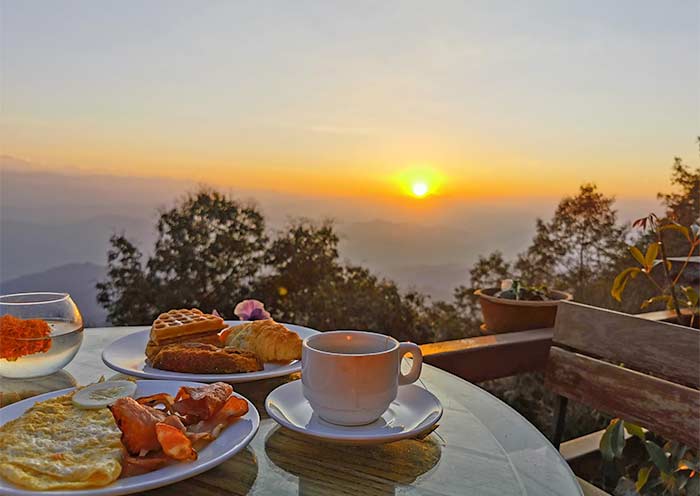


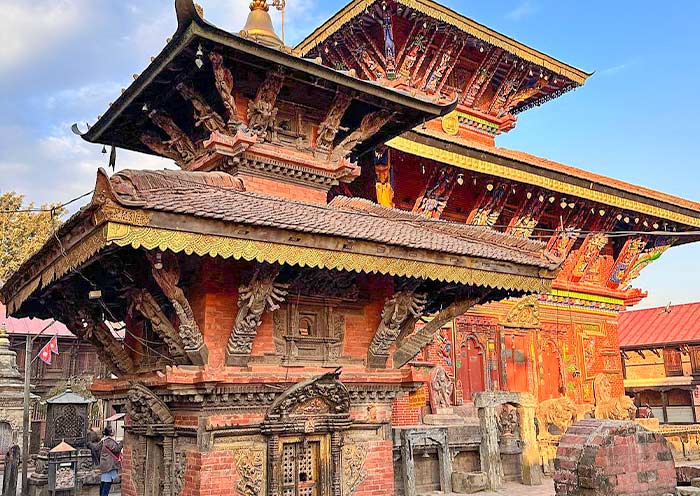
It is time to end your 5-day Nepal tour. You will have some free time in Kathmandu and explore more on your own till your guide escorts you to the airport for your flight to your next destination
Extension Ideas: If you prefer to travel longer in Nepal, you can extend your trip to other highlighted parts of Nepal, including Chitwan, Pokhara, and Lumbini.
Thank you for choosing Asia Odyssey Travel (AOT) for your Nepal tour, we are always here working for you and hope to see you again for your next trip to Asia. Safe journey!
Note: Please note that some of the sites mentioned in the itinerary may be subject to change based on factors such as the season, weather conditions, national holidays, and special events. We reserve the right to modify the itinerary to ensure an enhanced tour experience in Nepal.


Price: What’s Included & What’s Excluded
What’s Included:
What’s Excluded:
Important Travel Tips for Visiting Nepal
Before your trip, it is important to check the visa requirements for Nepal and ensure that you have all the necessary documents. The most common method of obtaining a tourist visa for Nepal is through Visa on Arrival. This means you can get your visa upon arrival at the Tribhuvan International Airport in Kathmandu or at designated land border crossings if you are entering Nepal overland.
To facilitate the visa application process, it is recommended to provide your detailed information to your travel experts before making any reservations. They can then offer you personalized suggestions and guidance regarding the visa application process. This will help ensure that you have all the necessary information and documentation to successfully apply for your Nepal visa.
Nepal's climate is diverse due to its varied topography, spanning from lowland plains to the towering Himalayas. The optimal times to visit Nepal are generally in autumn (October and November) and spring (March to May). During these seasons, the weather is mild and pleasant, making it an ideal time for outdoor activities, trekking, and mountain climbing. Additionally, important cultural festivals like Holi, Nepal Losar, Indra Jatra, and Dasain take place during these periods, adding to the vibrant atmosphere.
On the other hand, the summer season (June to September) in Nepal coincides with the monsoon season, characterized by heavy rainfall. While the monsoon brings lush greenery to the landscape, it can also lead to challenging conditions for outdoor activities.
Highways connecting major cities and towns in Nepal are generally well-maintained and in good condition. Some sections of these highways may experience occasional maintenance or repair work, which can cause temporary disruptions or delays.
If you are traveling from the Gyirong Border to Kathmandu, which is approximately 130-150 kilometers away, the journey can take around 6-7 hours by road. Similarly, if you plan to visit destinations like Pokhara, Chitwan, or Lumbini from Kathmandu, it generally takes about 5-7 hours of driving.
Alternatively, if you prefer a quicker and more convenient option, there are direct flights available from Kathmandu to Pokhara, Chitwan, and Lumbini. Considering a flight transfer can save you time and offer a more comfortable travel experience.
The official currency of Nepal is the Nepalese Rupee (NPR). It is recommended to carry a combination of cash (in small denominations) and a debit or credit card. ATMs are widely available in major cities, but may be limited in remote areas.
(1) When in Nepal, it is customary to greet others with "Namaste," a traditional greeting that involves joining your palms together in a prayer-like gesture and saying "Namaste" while slightly bowing. This gesture shows respect and is widely appreciated.
(2) Nepal is home to a significant population practicing Hinduism and Buddhism. It is important to demonstrate respect when visiting religious sites. Remember to dress modestly, remove your shoes, and adhere to any specific rules or rituals observed at each location, such as covering your shoulders or refraining from certain actions.
(3) If you wish to take photographs of religious ceremonies or individuals, it is polite to seek permission first. Some religious sites may have restrictions on photography, and it's important to respect the privacy and sacredness of the moment.
(4) Nepal celebrates numerous festivals throughout the year, providing a fantastic opportunity to immerse yourself in the vibrant culture and traditions. During these festive occasions such as Dashain, Tihar, Holi, and Buddha Jayanti, it is customary to exchange greetings, offer and receive blessings, and participate in religious rituals. Embrace the festive spirit and engage respectfully in the celebrations.
(5) By being mindful of these customs and traditions, you can show your appreciation for the Nepalese culture and ensure a more enjoyable and respectful experience during your visit.
Hotel Conditions for Your Nepal Tour




In Nepal, most travelers typically allocate 3-4 nights in Kathmandu, 2 nights in Pokhara, 2 nights in Chitwan, 1 night in Nagarkot, or 2 nights in Lumbini. To cater to various travelers' preferences and budgets, we offer a range of carefully chosen accommodations, including luxurious 5-star hotels, comfortable 4-star options, and economical 3-star establishments.
Find your perfect hotel for a great experience: We offer a diverse selection of hotels in Nepal, catering to all types of travelers. Our knowledgeable travel experts can provide you with various pricing options based on different hotels. Whether you seek a luxurious stay or have specific preferences, our experts will assist you in choosing the best option that suits your needs.
Photo Gallery for This Itinerary
Latest Nepal Tours Reviews from Our Customers

Clive
Britain
Destination(s): Tibet
Date of Experience: Oct 21, 2024
Tour Customized by: Alina
You May be Interested in This Tour: Customized Tour

Jim
Australia
What a wonderful experience we had, with fabulous support from Alina at Asia Odyssey and from our great driver Vipin and our guides (Prerak in Delhi, Sanjay in Agra and Suresh in Jaipur). The guides were knowledgeable, communicative and friendly, and all had a good appreciation as well of food, which meant their restaurant suggestions were excellent. Vipin accompanied us throughout our trip and shared many things with us, beyond being a driver, including taking us to the Galvani Hindu temple in Jaipur.
What an amazing trip. We did the Golden Triangle, which has a particular focus on the architecture and history of the Mughul empire, especially Shah Jahan, who built the Taj Mahal. And the buildings are spectacular! The Taj is most known, and I found the inlay work (precious stones inlaid in the white marble) to be the highlight. We bought a marble elephant done in the same way as a reminder of the walls of the Taj - seeing the actual artisans doing this inlay work in with traditional tools added to our experience and we were delighted to buy some of their special work.
Having said that, my personal preference was for the red sandstone buildings rather than the white marble. The detailed work of carving the sandstone is for me as beautiful as the similar work on the marble, and the colours are nicer, softer.
Similarly, the timber constructions in Nepal were unbelievable - as detailed as the work we saw in India, and wonderfully maintained, even if it has experienced significant impacts from earthquakes.
The photos below highlight our experiences - the captions provide the rest of the detail.
Date of Experience: Sep 19, 2024
Tour Customized by: Alina
You May be Interested in This Tour: Customized Tour

Molly Durnas
US
I just graduated college and was planning on solo traveling Asia for 3 months. In the beginning of May, my mother very last minute decided that she would join me for a few weeks starting in the beginning of June. We both were very busy and had to quickly come up with a plan, which is when we found Asia Odyssey. Alina was super prompt in her response and quickly made us an itinerary for Nepal and Bhutan that fit exactly to our needs. After seeing how expertly Alina was able to create this itinerary, we also requested she make us an itinerary for India’s Golden Triangle including Delhi, Agra, and Rajasthan that we would embark on before Nepal/Bhutan.
Altogether we were under the care of Asia Odyssey for about a month, and simply could not have had a better experience. Alina was constantly in contact with us to make sure that everything was going smoothly and that we were having a wonderful time. In Nepal, we very last minute changed our plan to fly instead of drive for two of our locations and Alina was so understanding and helpful in allowing us to change our plans. Alina truly took wonderful care of us from start to finish and she is such a gem. Thank you so much for everything Alina!
Our trip to India felt right out of a magazine. Our driver Satish in India was with us over a week and is one of the kindest, most genuine people I have ever met in my entire life. I’ve been wanting to go to India with my mother for years and the trip was absolutely perfect - every hotel, every restaurant, every sight was absolutely wonderful. I was blown away with the country and the culture, and Asia Odyssey allowed us to experience it in the most comfortable and seamless way.
Our adventures in Nepal and Bhutan were some of the best of my life! The mountains and culture were unlike anything I’d experienced before, and I truly felt that I was able to get a genuine feel for the countries. The mountains and all of the buddhist monasteries and temples were some of the most beautiful things I’ve seen in my life. I absolutely cannot wait to come back - and when I do it will definitely be with Asia Odyssey.
Our guides Prarek, Ganesh, Narendra, Amit, Ghana, and Jigme throughout India, Nepal and Bhutan were all absolutely amazing, as were our drivers Satish, Keshav, and Momlal. Every single person we met was so incredible and made us feel so welcomed.
I cannot speak highly enough of Asia Odyssey and the hospitality shown by all involved in our trip. Thank you so much for the trip of a lifetime, and we hope to return very soon!
Date of Experience: Jun 01, 2024
Tour Customized by: Alina
You May be Interested in This Tour: Customized Tour
Price: Request
(Based on a private tour for two people. Price varies depending on program, travel date, number of people.)
Free Enquiry! You don’t need to pay for the reservation.
- United States (+1)
- Australia (+61)
- Singapore (+65)
- Malaysia (+60)
- Philippines (+63)
- Canada (+1)
- Italy (+39)
- Indonesia (+62)
- United Kingdom (+44)
- Spain (+34)
- Mexico (+52)
- Hong Kong (+852)
- Thailand (+66)
- United Arab Emirates (+971)
- New Zealand (+64)
- South Africa (+27)
- Germany (+49)
- Brazil (+55)
- India (+91)
- France (+33)
- Vietnam (+84)
- The Netherlands (+31)
- Saudi Arabia (+966)
- Ireland (+353)
- Argentina (+54)
- Switzerland (+41)
- Romania (+40)
- Pakistan (+92)
- Japan (+81)
- Portugal (+351)
- Bangladesh (+880)
- South Korea (+82)
- Puerto Rico (+1)
- Türkiye (+90)
- China (+86)
- Belgium (+32)
- Qatar (+974)
- Greece (+30)
- Taiwan (+886)
- Austria (+43)
- Poland (+48)
- Israel (+972)
- Chile (+56)
- Sri Lanka (+94)
- Nigeria (+234)
- Peru (+51)
- Colombia (+57)
- Hungary (+36)
- Nepal (+977)
- Denmark (+45)
- Bulgaria (+359)
- Norway (+47)
- Slovenia (+383)
- Sweden (+46)
- Kuwait (+965)
- Costa Rica (+506)
- Ecuador (+593)
- Venezuela (+58)
- Malta (+356)
- Croatia (+385)
- Tunisia (+216)
- Czechia (+420)
- Mongolia (+976)
- Bahrain (+973)
- Mauritius (+230)
- Papua New Guinea (+675)
- Cambodia (+855)
- Dominican Republic (+1)
- Luxembourg (+352)
- Finland (+358)
- Guatemala (+502)
- Myanmar (+95)
- Maldives (+960)
- Slovakia (+421)
- Laos (+856)
- Serbia (+381)
- Brunei (+673)
- Oman (+968)
- Macao (+853)
- Panama (+507)
- Morocco (+212)
- Jordan (+962)
- Georgia (+995)
- Fiji (+679)
- Bolivia (+591)
- Lithuania (+370)
- Bahamas (+1)
- Cyprus (+357)
- Latvia (+371)
- Bhutan (+975)
- Iraq (+964)
- Iran (+98)
- Kenya (+254)
- Jamaica (+1)
- Zimbabwe (+263)
- Azerbaijan (+994)
- Uruguay (+598)
- Estonia (+372)
- Andorra (+376)
- Cameroon (+237)
- Ghana (+233)
- Kazakhstan (+7)
- Nicaragua (+505)
- Egypt (+20)
- Russia (+7)
- Albania (+355)
- Réunion (+262)
- Montenegro (+382)
- Algeria (+213)
- Afghanistan (+93)
- Martinique (+596)
- Uganda (+256)
- Honduras (+504)
- North Macedonia (+389)
- Trinidad and Tobago (+1)
- Suriname (+597)
- Antigua and Barbuda (+1)
- Zambia (+260)
- Ukraine (+380)
- Armenia (+374)
- Barbados (+1)
- Belarus (+375)
- Palestine (+970)
- Lesotho (+266)
- Moldova (+373)
- Ethiopia (+251)
- French Polynesia (+689)
- Gambia (+220)
- Guam (+1)
- Gibraltar (+350)
- Isle of Man (+44)
- New Caledonia (+687)
- El Salvador (+503)
- Comoros (+269)
- Seychelles (+248)
- Chad (+235)
- Samoa (+685)
- Cook Islands (+682)
- Palau (+680)
- Paraguay (+595)
- DR Congo (+243)
- Solomon Islands (+677)






